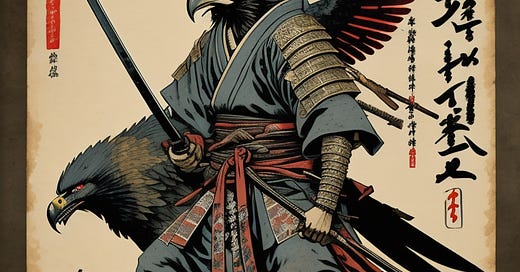Shugendō (修験道)
Is a Japanese syncretic religious and spiritual practice that blends elements of asceticism, mysticism, Shinto, and Buddhism. The primary focus of Shugendō is the pursuit of enlightenment and spiritual power through rigorous, disciplined practices in mountains, which are considered sacred spaces in Japanese culture. Here are some key points about Shugendō:
1. Origins:
Shugendō's roots can be traced back to ancient Japan, where mountain worship was prevalent. Over time, it absorbed elements from Shinto, Taoism, and Esoteric Buddhism, evolving into a distinct practice.
2. Practitioners:
The practitioners of Shugendō are known as **yamabushi** (meaning "one who lies down in the mountains") or **shugenja**. They are ascetics who undergo rigorous training in the mountains to attain spiritual power.
3. Practices:
Yamabushi engage in various practices, such as:
Misogi: Ritual purification using water, often in waterfalls or rivers.
Gyo: Ascetic practices, including fasting, meditation, and chanting.
Pilgrimage: Journeying to sacred mountain sites, especially Kumano and Haguro, among others.
4. Mountain Worship:
Mountains are central to Shugendō. They are seen as places where deities reside and where one can gain spiritual insight. The challenging terrain and isolation of mountains also provide an environment for rigorous ascetic practices.
5. Syncretism:
Shugendō is highly syncretic, meaning it incorporates elements from various religious traditions. While it started with ancient mountain worship, it integrated aspects of Shinto, especially the worship of kami (spirits), and various Buddhist practices and doctrines, particularly from Esoteric Buddhism.
6. Decline and Modern Era:
During the Meiji period (late 19th to early 20th century), the Japanese government promoted State Shinto and sought to separate Shinto and Buddhism. As a result, Shugendō, being a blend of both, was officially abolished. However, it persisted in various forms and has experienced a resurgence in modern times, both in Japan and abroad.
Shugendō offers a unique perspective on spirituality, emphasizing the connection between humans and nature, self-discipline, and the pursuit of enlightenment through direct experience.




Does anyone know the artist or source of the artwork that accompanies this article??